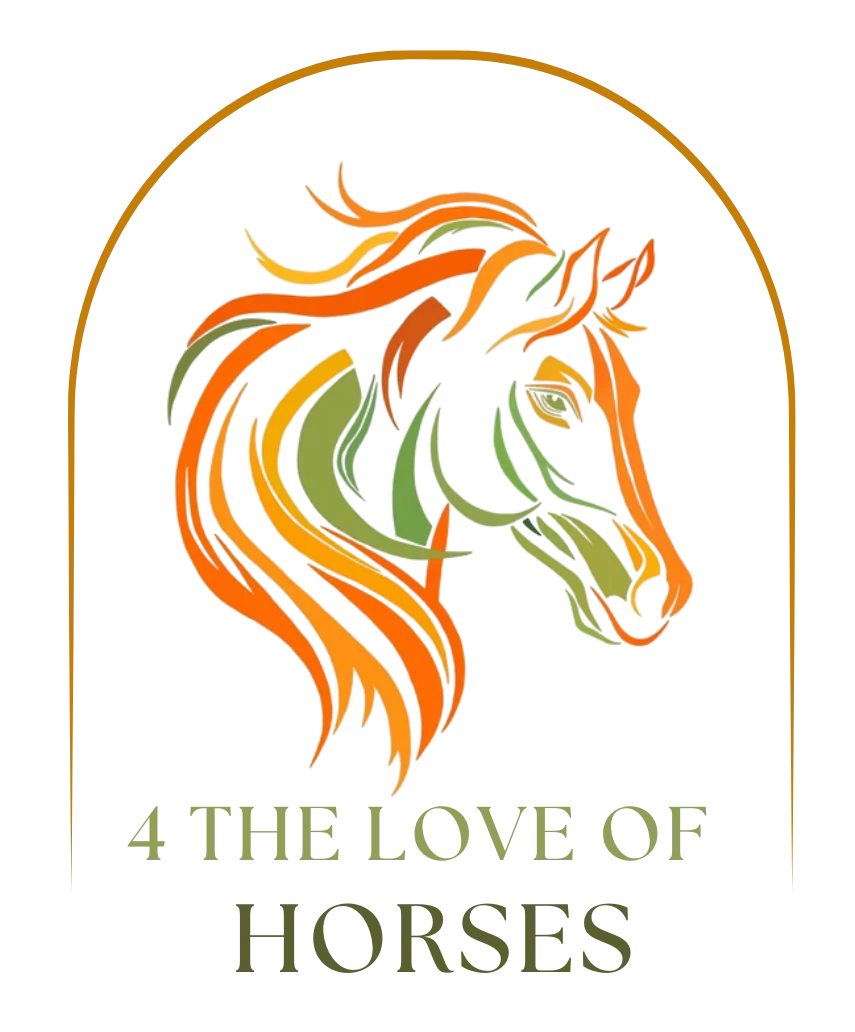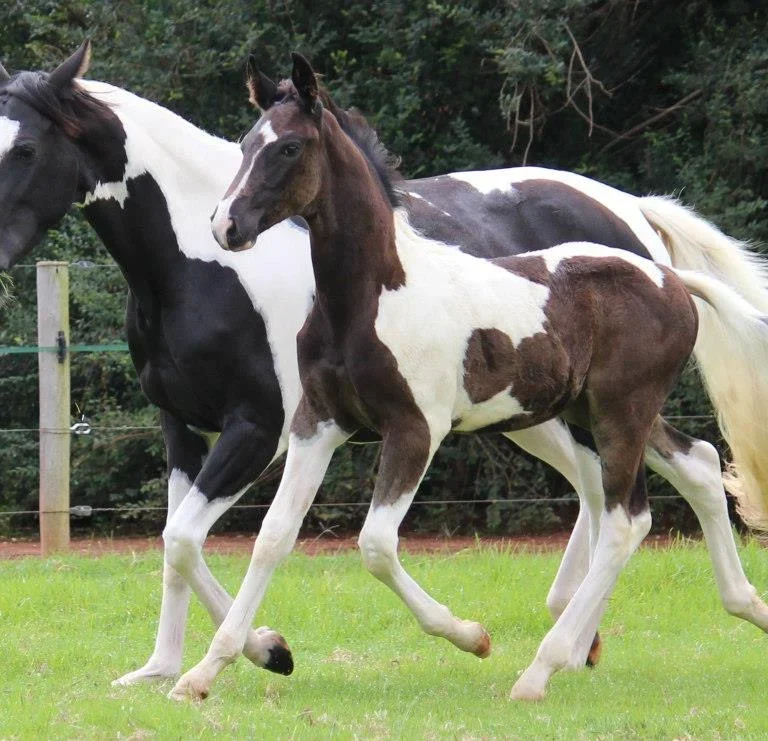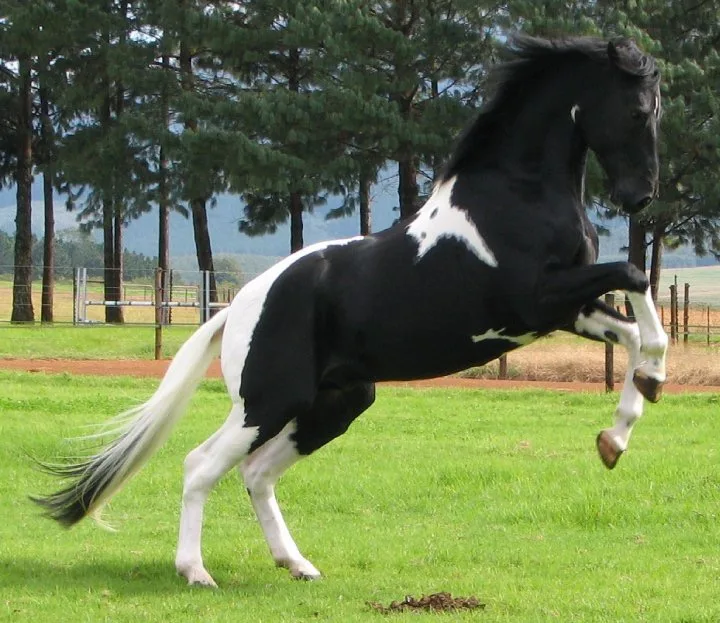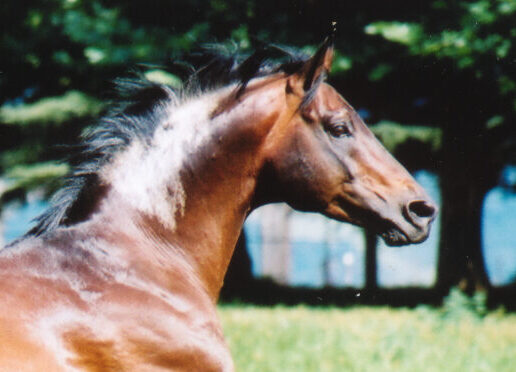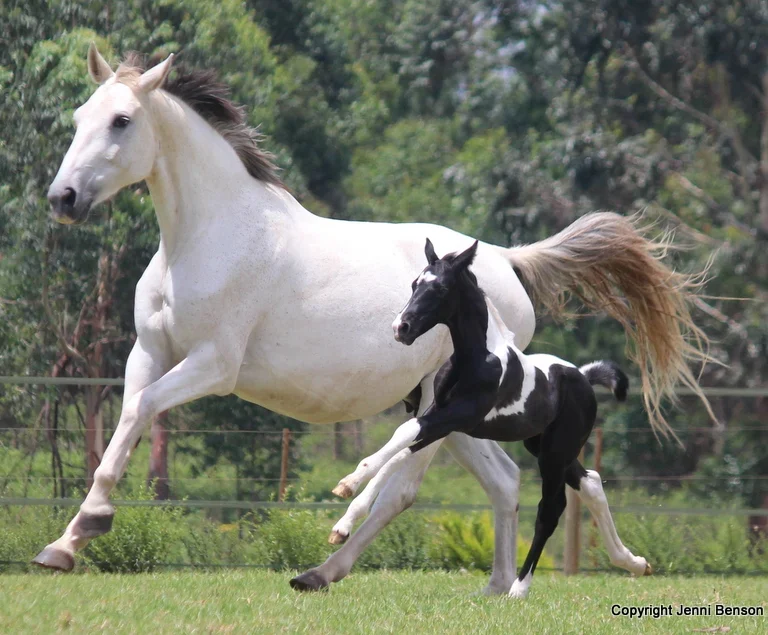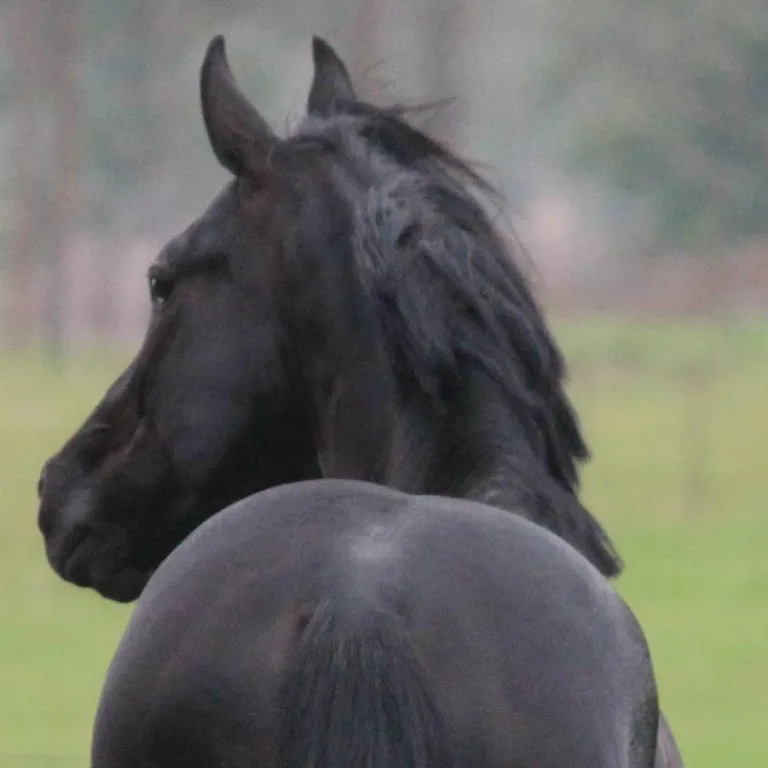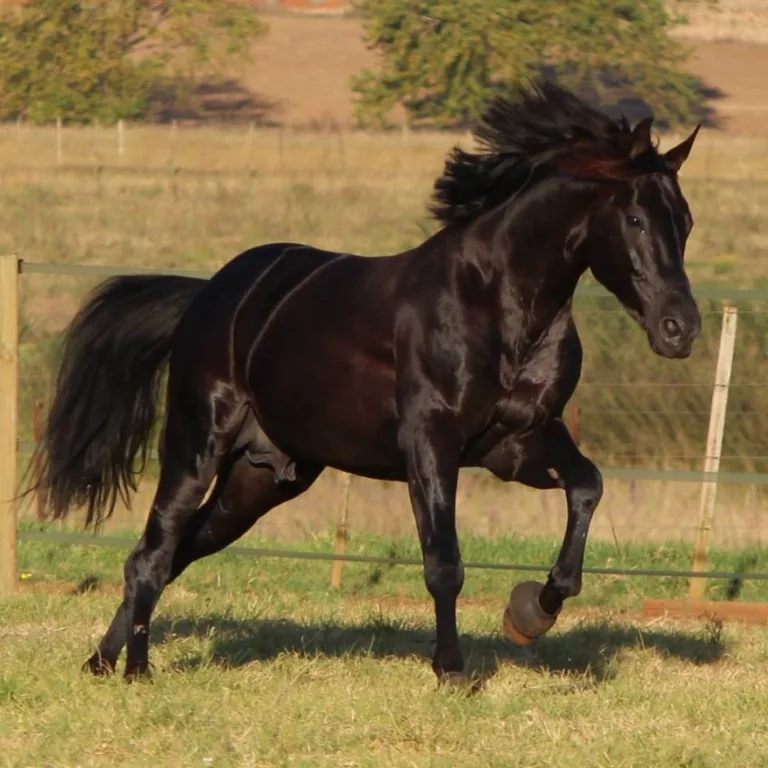Beyond Beauty: The Science of Evaluating Stallions for Successful Breeding
In the exciting world of equine breeding, where every hoofbeat resonates with the promise of legacy and excellence, the selection of a stallion transcends mere aesthetics. It delves deep into the realms of science, genetics, and conformation, unlocking the secrets to producing the finest equine specimens. Join me on this captivating journey as we unravel the intricate tapestry of stallion evaluation, where beauty meets intellect, and passion converges with purpose. Prepare to be captivated, enlightened, and inspired as we explore the art and science behind breeding stallions for a future of greatness. Beyond beauty lies the essence of true breeding mastery – let’s embark on this exciting quest together
Conformation
Conformation plays a pivotal role in the selection of a stallion for breeding due to its direct impact on the health, athleticism, and performance potential of offspring. Here’s why conformation is crucial:
- Health and Soundness: Proper conformation promotes structural integrity and soundness in horses. A stallion with correct conformation is less prone to injuries and health issues, ensuring that he can pass on robust genes to his progeny.
- Athleticism and Performance: Good conformation correlates with optimal biomechanics and movement efficiency. A well-conformed stallion is more likely to possess the agility, balance, and athleticism required for various disciplines, whether it’s racing, show jumping, dressage, or eventing. Offspring inherit these desirable traits, enhancing their athletic potential.
- Functionality and Versatility: Conformation influences a horse’s ability to perform specific tasks effectively. A stallion with balanced proportions, correct limb alignment, and appropriate muscle development is better equipped to excel in his intended discipline. By selecting a stallion with versatile conformation, breeders can produce offspring suitable for a range of equestrian pursuits.
- Reproductive Success: Conformation extends beyond external appearance to include reproductive anatomy. A well-built stallion with correct reproductive conformation is more likely to have optimal fertility and breeding efficiency. Breeding to a stallion with sound reproductive conformation increases the likelihood of successful conception and pregnancy in mares.
- Breed Standard Adherence: Conformation standards are defined by each breed’s ideal characteristics, as outlined by breed registries and associations. Breeding to stallions that closely adhere to the breed standard helps preserve the integrity and authenticity of the breed, maintaining its distinctive traits and qualities across generations.
In essence, conformation serves as the cornerstone of breeding decisions, guiding breeders toward selecting stallions that not only possess physical beauty but also embody the structural integrity, athleticism, and functionality necessary to produce exceptional offspring. By prioritizing conformation in stallion selection, breeders pave the way for the advancement and enhancement of equine breeds worldwide.
- Body Structure:
- Balance: Look for a well-balanced overall appearance. The stallion’s body should not appear too front-heavy or back-heavy. A balanced horse is more likely to move efficiently and avoid strain on specific body parts.
- Proportion: Assess the proportions of different body parts, such as the length of the neck compared to the body, the length of the back, and the overall length of the body. Harmonious proportions contribute to a well-balanced appearance.
- Symmetry: Check for symmetry in the horse’s body. Uneven development or asymmetry may indicate potential conformation issues or developmental problems.
- Legs and Feet:
- Straightness: Examine the horse’s legs from the front, back, and sides. Ideally, the legs should be straight with no deviations. Bowing, buckling, or excessive curvature can lead to soundness issues and affect the horse’s ability to move comfortably.
- Correct Angles: Evaluate the angles of the horse’s joints, including the shoulder, knee, hock, and pastern. Proper angles contribute to efficient movement and reduce stress on joints.
- Well-Formed Hooves: Inspect the hooves for shape, size, and overall health. Well-formed hooves are essential for the horse’s soundness and comfort. Issues like clubfoot, flat feet, or contracted heels can impact the horse’s ability to move correctly.
- Topline:
- Strong and Level: A strong topline refers to the muscles along the horse’s back and loin area. A well-developed back and hindquarters contribute to strength. The topline should appear level when viewed from the side, without excessive dipping or roaching.
- Well-Developed Back and Hindquarters: Assess the musculature of the back and hindquarters. A strong, well-developed back supports the rider’s weight and allows for effective engagement of the hindquarters. The hindquarters should be muscular and provide power for movement.
By thoroughly evaluating these conformational aspects, breeders can make informed decisions about the suitability of a stallion for breeding. It’s important to note that conformation is just one aspect of the overall assessment, and other factors like temperament, health, and performance should also be considered for a comprehensive evaluation.
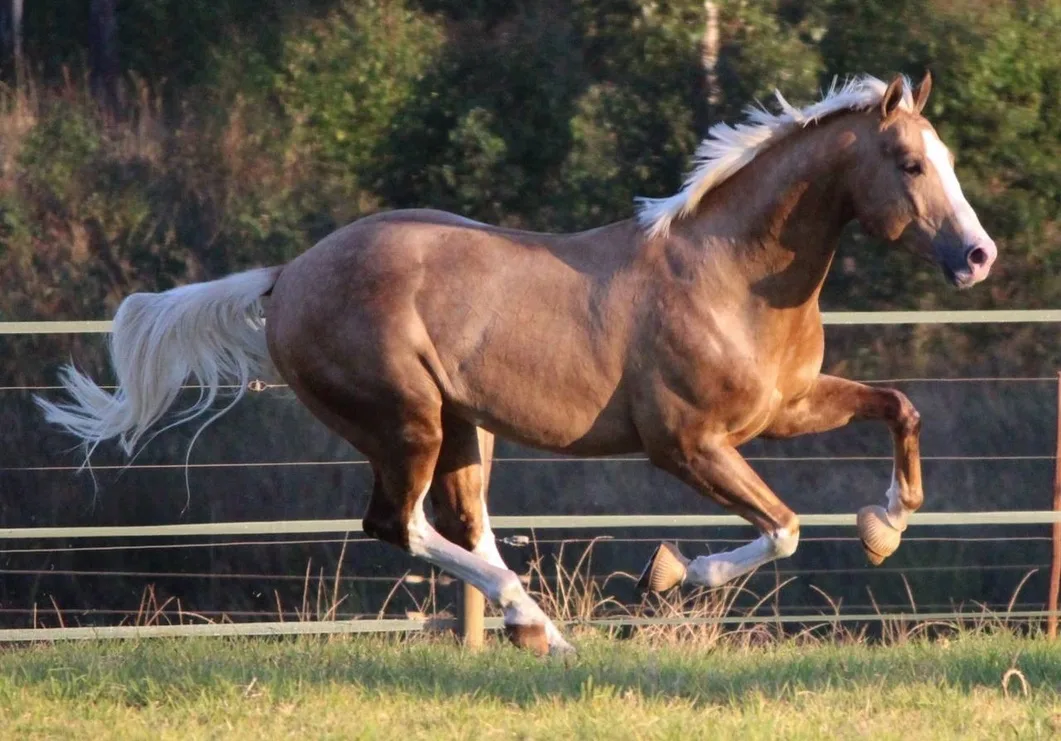
Health and soundness
- Genetic Health:
- Hereditary Conditions: Research the stallion’s genetic background to identify any hereditary conditions or genetic disorders that may be passed on to offspring. This information can be obtained from the stallion’s pedigree and the history of its ancestors. A thorough understanding of the genetic makeup helps in making informed breeding decisions and avoiding potential health issues in the offspring.
- Medical History:
- Routine Veterinary Care: Review the stallion’s medical history, including routine veterinary care, vaccinations, and any past illnesses or injuries. Regular veterinary check-ups and preventive care contribute to the overall health of the stallion.
- Reproductive Health: Ensure that the stallion has been evaluated for reproductive health, including fertility assessments and tests for any reproductive issues. A breeding soundness examination (BSE) conducted by a veterinarian can provide valuable information about the stallion’s reproductive capabilities.
- Soundness:
- Joints: Evaluate the soundness of the stallion’s joints, checking for any signs of arthritis, swelling, or stiffness. Flexion tests may be performed to assess joint flexibility.
- Movement: Observe the stallion’s movement at various gaits. Sound movement includes smooth transitions between gaits, balanced and coordinated strides, and the absence of any signs of lameness. Lameness can be an indication of musculoskeletal issues or pain.
- Flexibility: Assess the stallion’s overall flexibility, including the ability to bend at the neck, back, and hindquarters. Adequate flexibility is essential for performing various tasks and can prevent injuries during physical activities.
By carefully considering genetic health, medical history, and overall soundness, breeders can increase the likelihood of producing healthy and robust offspring with a lower risk of hereditary issues or health complications. Regular veterinary care and ongoing monitoring contribute to the long-term well-being of the breeding stallion.
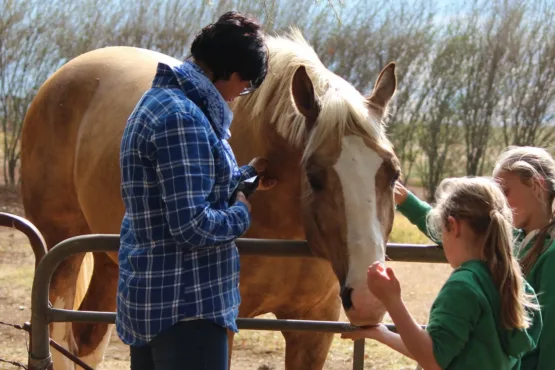
Temperament
Assessing a stallion’s temperament is crucial when selecting a breeding candidate. A stallion’s disposition directly influences the temperament of your foal. There are two key components of temperament:
- Behavior:
- Calmness: A desirable breeding stallion should exhibit a calm demeanor in various situations. This includes interactions with humans, exposure to new environments, and during handling. Calmness is important for safety, as an overly reactive or aggressive stallion can pose risks to handlers and other horses.
- Adaptability: Evaluate how well the stallion adapts to changes in its environment or routine. A stallion that can adjust calmly to new circumstances is generally easier to manage and can handle the stress associated with breeding activities more effectively.
- Social Interaction: Observe the stallion’s behavior when interacting with other horses. A well-adjusted stallion should display appropriate social behaviors, avoiding excessive aggression or isolation.
- Trainability:
- Cooperativeness: A good breeding stallion should be cooperative and willing to work with handlers. This includes being responsive to cues and commands, whether on the ground or under saddle. A cooperative nature makes training more efficient and contributes to a positive working relationship.
- Focus and Attention: Evaluate the stallion’s ability to maintain focus during training sessions. A stallion that is easily distracted or overly reactive may struggle with learning new tasks. A trainable stallion should be able to concentrate on the task at hand and respond appropriately to training cues.
- Consistency in Behavior: Look for consistency in the stallion’s behavior over time. A stallion that consistently exhibits positive traits, such as a calm demeanor and willingness to cooperate, is more likely to pass on these traits to its offspring.
It’s important to note that temperament can be influenced by both genetics and environmental factors. Early socialization and positive handling experiences can contribute to the development of a good temperament. Additionally, consistent and patient training practices play a significant role in shaping a stallion’s behavior.
Breeders should prioritize selecting stallions with temperaments that align with their breeding goals and that are suitable for the intended use of the offspring, whether it be for performance, companionship, or other purposes. Regular interaction, positive reinforcement, and ongoing training can further enhance and maintain a stallion’s positive temperament.
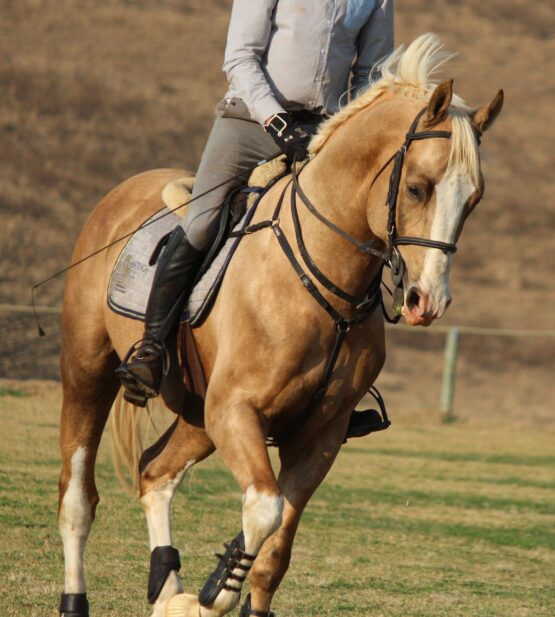
reproductive health
Evaluating a stallion’s reproductive health is a critical aspect of determining its suitability for breeding. Here’s an expanded explanation of the two key components related to reproductive health:
- Fertility:
- Thorough Veterinary Examination: Find a good equine fertility veterinarian to conduct a thorough reproductive health examination of the stallion. This examination typically includes a physical examination, assessment of the reproductive anatomy, and evaluation of semen quality.
- Semen Analysis: Semen analysis is a crucial component of assessing a stallion’s fertility. The veterinarian will collect semen samples to analyze factors such as sperm count, motility (movement), and morphology (shape). These parameters provide insights into the stallion’s reproductive capability. High sperm quality is essential for successful breeding.
- Breeding History:
- Previous Breeding Success: Investigate the stallion’s breeding history, including the number of mares bred, conception rates, and the overall success of the breeding program. A stallion with a positive track record of producing healthy foals is more likely to be a reliable breeding candidate.
- Fertility Records: Examine records of fertility assessments and breeding outcomes. This information can include the number of live foals produced, any instances of pregnancy loss, and the overall reproductive efficiency of the stallion.
- Consistency: Assess whether the stallion has consistently demonstrated fertility over multiple breeding seasons. Consistency in reproductive performance is an important indicator of a stallion’s reliability as a breeding sire.
In addition to these two key components, it’s crucial to consider other aspects of reproductive health, including:
- Libido and Mating Behavior: Evaluate the stallion’s libido, which refers to its sexual drive and interest in mating. Additionally, observe the stallion’s behavior during mating to ensure it engages in appropriate and effective mating practices.
- Physical Examination of Reproductive Organs: A thorough physical examination of the reproductive organs, including the testicles and accessory sex glands, helps identify any abnormalities or issues that may impact reproductive function.
- Regular Reproductive Monitoring: Establish a routine reproductive monitoring program, including regular veterinary check-ups and semen evaluations. Regular monitoring allows for early detection of any reproductive issues and ensures timely intervention if needed.
By combining a comprehensive veterinary examination with a thorough review of the stallion’s breeding history, breeders can make informed decisions about the stallion’s reproductive health and its suitability for contributing to a successful breeding program. Regular veterinary care and ongoing monitoring are essential for maintaining and optimizing the reproductive health of breeding stallions.
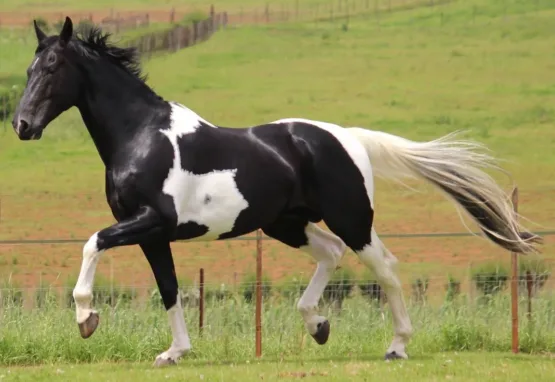
Performance Record
Evaluating a stallion’s performance record is an important aspect of assessing his suitability for breeding. Here’s an expanded explanation of the two key components related to performance records:
- Show Record:
- Competition History: If applicable, review the stallion’s competition history, including details of participation in shows, races, or other competitive events. Look for achievements, awards, and placements in relevant competitions.
- Discipline Specifics: Consider the specific discipline or disciplines in which the stallion has competed. Different stallions may excel in various disciplines such as dressage, show jumping, racing, reining, or other performance categories. Assess how well the stallion’s skills align with your breeding goals.
- Progeny Performance:
- Offspring Achievements: Assess the performance and achievements of the stallion’s offspring. Look for information on the success of the stallion’s progeny in various disciplines, including their performance in shows, races, or other competitive events.
- Consistency in Progeny Performance: Consider whether the stallion consistently produces offspring with desirable traits and aptitudes. Consistency in the success of the stallion’s progeny can be an indicator of the stallion’s ability to pass on positive characteristics.
In addition to these two key components, it’s important to consider the following:
- Conformation and Traits in Progeny: Evaluate whether the stallion consistently imparts positive conformational traits, temperament, and other desirable characteristics to its offspring. Assessing the physical traits and qualities of the stallion’s progeny is essential for predicting the potential success of future generations.
- Diversity of Offspring Achievements: Consider the diversity of achievements among the stallion’s offspring. A stallion that produces successful progeny across a range of disciplines may be more versatile and valuable for breeders with varied goals.
- Health and Longevity of Progeny: Take into account the overall health, soundness, and longevity of the stallion’s offspring. A stallion that consistently produces healthy and long-lived progeny is likely to contribute positively to the breeding program.
- Feedback from Owners and Handlers: If possible, seek feedback from owners and handlers of the stallion’s offspring. Their experiences can provide valuable insights into the temperament, trainability, and performance potential of the progeny.
By thoroughly evaluating both the stallion’s own show record and the performance of its progeny, breeders can gain a comprehensive understanding of the stallion’s genetic contribution to the next generation. This information aids in making informed decisions about breeding pairings and selecting stallions that align with specific performance goals.
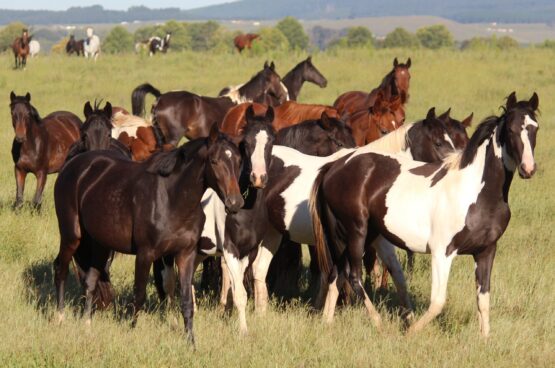
Contribution to Breeding Goals
When evaluating a stallion’s contribution to breeding goals, it’s essential to align the stallion’s characteristics with the specific objectives and priorities of the breeding program. Here’s an expanded explanation of the key considerations:
- Breeding Goals:
- Define Objectives: Clearly articulate the breeding goals of your program. These goals may include producing horses for specific disciplines (e.g., dressage, show jumping, racing), enhancing certain traits (e.g., conformation, temperament), or achieving specific size or color preferences.
- Long-Term Vision: Consider the long-term vision for your breeding program. This could involve creating a line of horses with consistent traits, contributing to the improvement of a particular breed, or achieving success in specific competitive arenas.
- Assessment of Stallion:
- Size: Evaluate the stallion’s size in relation to your breeding goals. Consider whether the stallion’s height, weight, and overall build align with your preferences. Size can be an important factor, especially if you have specific size requirements for the intended use of the offspring.
- Discipline Suitability: Assess the stallion’s suitability for the intended discipline or disciplines. If you aim to produce horses for a particular sport or activity, the stallion should have demonstrated skills and characteristics relevant to that discipline. For instance, a stallion with a successful show jumping career may be more suitable for breeders focused on producing jumping horses.
- Conformation: Examine the stallion’s conformation and physical traits. Consider whether the stallion possesses desirable conformational characteristics that align with your breeding goals. This includes evaluating body structure, legs and feet, topline, and other relevant conformational features.
- Genetic Contribution:
- Pedigree Analysis: Analyze the stallion’s pedigree to understand its genetic background. Assess whether the stallion comes from a line with a history of producing horses with the desired traits. A strong pedigree can increase the likelihood of the stallion passing on positive genetic characteristics to its offspring.
- Consistency in Genetic Contribution: Consider whether the stallion consistently imparts desired traits to its progeny. Evaluate the performance and conformation of the stallion’s offspring to gauge the consistency of its genetic contribution.
- Temperament and Trainability:
- Temperament Alignment: Ensure that the stallion’s temperament aligns with your breeding goals. If you aim to produce horses with a specific temperament (e.g., calm, competitive, cooperative), choose a stallion that exhibits those traits.
- Trainability: Assess the stallion’s trainability and willingness to work with handlers. A stallion that is easy to train and cooperative contributes positively to the training experiences of its offspring.
By carefully considering these factors in the context of your breeding goals, you can make informed decisions about whether a particular stallion is well-suited to contribute to the objectives of your breeding program. Regular reassessment and adjustment of breeding goals as needed will help ensure the continued success and improvement of your breeding program over time.
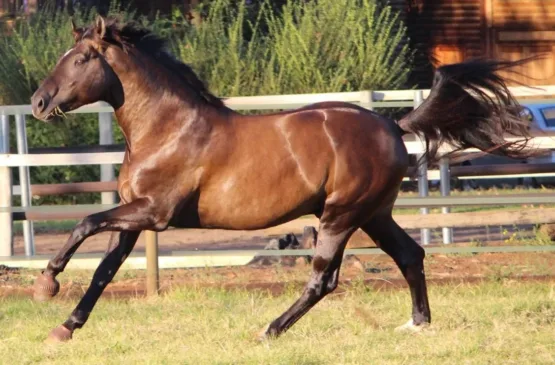
Nutrition and Overall Condition: Diet and Exercise
Certainly! Nutrition and overall condition are crucial aspects of a stallion’s well-being, and they play a significant role in reproductive health and performance. Here’s an expanded explanation of the key considerations:
- Diet and Exercise:
- Balanced Diet: Provide the stallion with a balanced and nutritionally appropriate diet. The diet should meet the specific nutritional needs of a breeding stallion, considering factors such as age, size, activity level, and reproductive status. Essential nutrients include proteins, carbohydrates, fats, vitamins, and minerals.
- Reproductive Nutrition: For breeding stallions, it’s important to ensure that the diet supports optimal reproductive function. Adequate levels of essential nutrients, including zinc, selenium, and certain vitamins, are critical for sperm production and overall reproductive health.
- Regular Veterinary Monitoring: Collaborate with a veterinarian to develop and monitor the stallion’s diet. Regular veterinary check-ups can help adjust the diet as needed based on the stallion’s health, reproductive status, and any specific dietary requirements.
- Weight and Condition:
- Ideal Body Condition: Evaluate the stallion’s body condition to ensure it falls within the ideal range. A stallion in optimal body condition is more likely to have good overall health, fertility, and performance. Body condition scoring, which assesses the amount of body fat, can help determine if the stallion is underweight, overweight, or at an ideal weight.
- Muscle Tone: Assess the stallion’s muscle tone, especially in areas such as the hindquarters, shoulders, and topline. Adequate muscle development is essential for overall strength, soundness, and performance.
- Grooming and Coat Condition: Regular grooming helps maintain skin and coat health, providing an opportunity to check for any abnormalities, such as skin issues or signs of parasites. A shiny, well-kept coat is often an indicator of good overall health.
- Exercise Routine: Implement an appropriate exercise routine that meets the stallion’s physical needs. Regular exercise helps maintain a healthy weight, promotes cardiovascular fitness, and supports musculoskeletal health. Adequate exercise is also beneficial for reproductive health.
- Hydration:
- Water Availability: Ensure the stallion has constant access to clean and fresh water. Hydration is essential for overall health, digestion, and reproductive function. Dehydration can negatively impact sperm quality and reproductive performance.
- Supplementation:
- Supplement as Needed: Consider supplementation based on the stallion’s specific needs. This may include additional vitamins, minerals, or other supplements that support reproductive health, joint health, or overall well-being. Consult with a veterinarian before introducing any supplements to the stallion’s diet.
Regular and consistent attention to nutrition, weight, and overall condition is essential for maintaining a breeding stallion’s health and ensuring optimal reproductive performance. Collaboration with a qualified veterinarian and periodic assessments of the stallion’s diet and condition contribute to the long-term well-being and success of the breeding program.
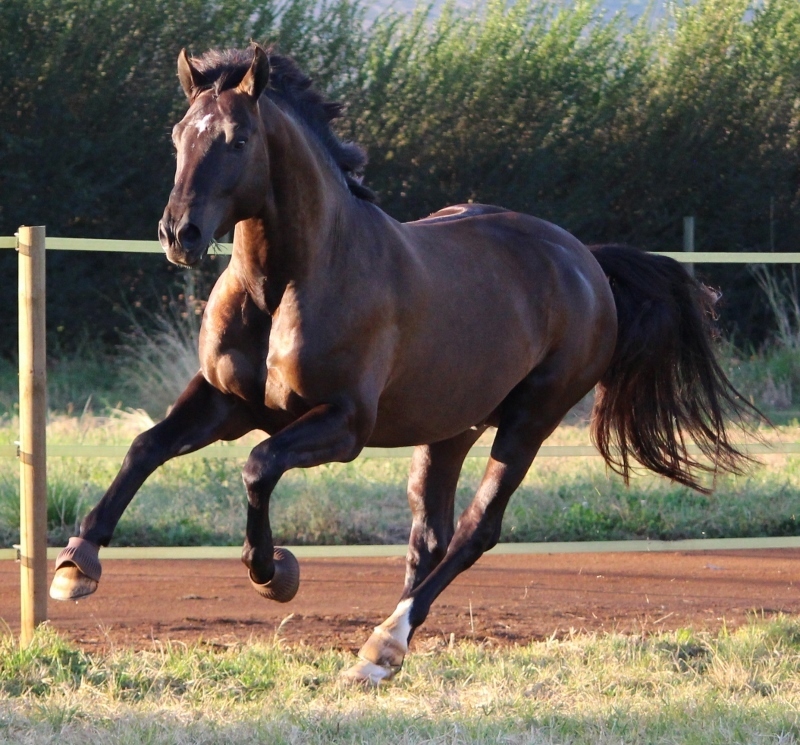
Legal and Ethical Considerations
Legal and ethical considerations are fundamental when it comes to breeding stallions. Here’s an expanded explanation of the key components:
- Documentation:
- Registration: Ensure that the stallion is properly registered with the relevant breed registry or studbook. This documentation verifies the stallion’s pedigree, lineage, and eligibility for breeding within a specific breed.
- Health Certificates: Obtain and maintain up-to-date health certificates for the stallion. These certificates may include proof of vaccinations, negative disease tests (such as for contagious equine diseases), and other health-related documentation. Compliance with health requirements is crucial for preventing the spread of diseases and ensuring the overall health of the breeding herd.
- Ownership Records: Maintain accurate and current ownership records for the stallion. Clear documentation of ownership is essential for legal purposes and ensures that all breeding transactions are conducted transparently and ethically.
- Ethical Standards:
- Transparency and Honesty: Practice transparency and honesty in all breeding dealings. Provide accurate information about the stallion’s health, performance record, and any known hereditary conditions. Honesty is crucial for establishing trust with mare owners and maintaining a positive reputation within the breeding community.
- Animal Welfare: Prioritize the welfare of the stallion and any mares involved in the breeding process. Adhere to high standards of care, including proper nutrition, veterinary care, and humane treatment. Avoid practices that could compromise the well-being of the animals.
- Informed Breeding Decisions: Encourage mare owners to make informed breeding decisions by providing comprehensive information about the stallion, including its conformation, performance record, and genetic background. Facilitate open communication to address any concerns or questions mare owners may have.
- Compliance with Regulations: Stay informed about and comply with all relevant local, state, and national regulations governing equine breeding. This may include zoning regulations, animal welfare laws, and any specific breeding guidelines set forth by breed registries or equestrian organizations.
- Responsible Marketing: Practice responsible marketing by accurately representing the stallion’s qualities and attributes. Avoid misleading advertising or misrepresentation of the stallion’s capabilities to ensure that mare owners make well-informed choices.
- Contracts and Agreements:
- Written Agreements: Use written contracts and agreements for all breeding transactions. Clearly outline the terms and conditions, including stud fees, live foal guarantees, and any other relevant details. Written agreements provide legal protection for both the stallion owner and the mare owner.
- Live Foal Guarantee: If offering a live foal guarantee, clearly define the terms and conditions of the guarantee in the contract. This may include conditions for mare management, veterinary care, and timelines for reporting live foal births.
By prioritizing proper documentation, ethical standards, and compliance with legal requirements, breeders contribute to the overall integrity of the equine breeding industry. Ethical practices and legal adherence not only protect the well-being of the animals involved but also establish a foundation for positive relationships within the breeding community.
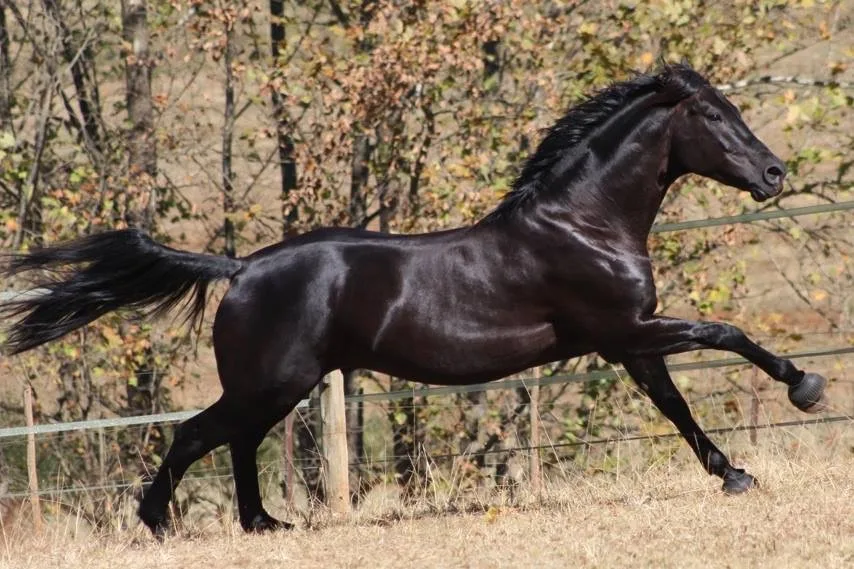
Links for Further Reading
- American Association of Equine Practitioners (AAEP) – Guidelines for Breeding Horses
- TheHorse.com – Evaluating a Horse’s Conformation
- Equine Reproduction – University of Kentucky
- Stallion Temperament: Assessing and Understanding
- TheHorse.com – Stallion Reproductive Health
- American Quarter Horse Association (AQHA) – Breeding Goals and Guidelines
- Horse Illustrated – Nutrition Basics for Every Horse
- The Spruce Pets – How to Assess a Horse’s Body Condition
- Equine Legal Solutions – Legal Considerations for Equine Breeding
- The Jurga Report – Ethical Breeding Practices in Horses
